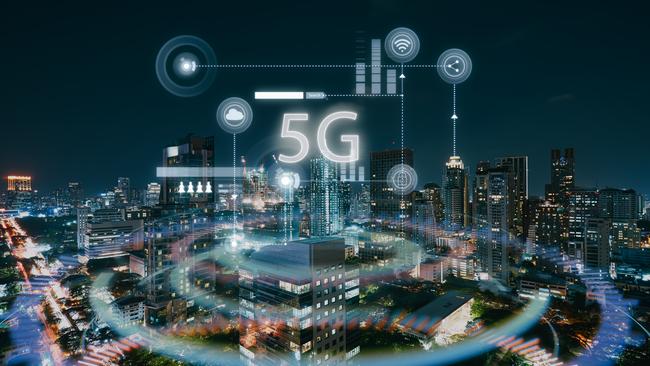A connected world is a sustainable world
Research has found that more than 68 per cent of businesses in Australia said that poor connectivity had held back business sustainability projects in the past 12 months.

-
-
Many organisations talk about sustainability – whether it’s a goal, a business value or something that a product or service helps other businesses achieve.
Suffice to say, sustainability has moved on in the past decade or so from being just a buzzword to being a very real part of organisational operations. Envi-ronmental sustainability and social sustainability are two key areas where connectivity matters.
Environmental benefits of 5G
Over the years, there have been numerous fears about the risks of 5G, that have since been dispelled.
One area of continued concern though is that to enable 5G connectivity for the whole population, a higher density of 5G sites than previous generations of mobile technology will be required. While this may suggest that the energy requirements of the mobile telecommunications sector under a 5G mobile network will be higher than previous generations of mobile networks, it will be a more efficient use of energy. (1)
The other huge benefit is that the applications of technology enabled by 5G (think smart buildings, digitalised supply chains, automated manufacturing) will significantly offset the energy requirements for the mobile network.
One example in the 2022 Deloitte Access Economics Report for AMTA (1) states that in Queensland, there are currently trials of 5G technology that could have significant environmental benefits. Telstra has deployed 55 IoT enabled weather stations to provide local weather data to farmers in the region which will enable greater crop yields and a less intensive use of natural resources. Another example is the integration of Wireless WAN/ 5G with smart energy management systems, which can revolutionise the way enterprises consume and manage energy.

By connecting energy-consuming devices and systems, WWAN enables real-time data exchange, allowing businesses to optimise energy consumption, peak load management, and demand-response programs.
For instance, office buildings can use wireless connectivity to adjust temperature and lighting based on occupancy, reducing energy waste. In fact, a Censuswide (2) research study commissioned by Cradlepoint this year found that more than 82 per cent of Australian businesses are considering using IoT devices to make workplaces more environmentally efficient. Interestingly, the research also found that more than 68 per cent of businesses in Australia said that poor connectivity had held back business sustainability projects in the past 12 months.
We must also look at the impact that remote working and learning has had on things like air quality in highly populated areas. In India for example, air quality of three megacities – Mumbai, Delhi and Kolkata – were analysed during the Covid lockdown phase and compared with a pre-lockdown scenario. The stop of vehicular movements and industrial lockdown across the nation had substantial effects on the environment, especially in the atmosphere near the Earth’s surface. Analysis showed significant improvements in air quality, with some air pollutant reductions of up to 50 per cent during the period of lockdown (March 25 to April 14, 2020) compared to the pre-lockdown phase (March 3 to March 23, 2020) and the same time window of the previous year (March 25 to April 14, 2019) (3). Enabled by wireless connectivity, cities worldwide can function and flourish by connecting employers with employees, students with educators, and robotics with controllers via HD cameras and videos instead of through road or air travel to meetings, factories and lectures, thus easing the environmental impact of daily travel.
Connectivity for sustainability
Connectivity as a human right is a topic that has been debated over the years, but really came to the fore during the global pandemic.
In Australia, we saw that poor digital connectivity is affecting the health of rural Australians and preventing doctors from providing quality digital healthcare, like telehealth services, in rural and regional areas. Similarly, when students moved to online home learning during the pandemic, the digital divide between different parts of the country became very apparent.
In the Censuswide research, over 85 per cent of organisations in the education sector agreed that poor connectivity is holding back students from developing the skills they need to succeed in a modern economy and over 83 per cent of businesses in Australia think that rural areas are being left behind in medical innovation due to poor connectivity. These are huge gaps that are affecting Australians’ wellbeing and the education of our next generation. Reliable connectivity truly is a commodity, and one that has been expedited due to the global pandemic. Wireless networking, 5G and sustainability intersect together to both increase mobility and protect the environment.
Nathan McGregor is senior vice-president Asia Pacific at Cradlepoint. He has over 20 years of leadership experience in the telecommunications and IT industry and has successfully led technology businesses across APAC delivering networking, IoT and analytics solutions across all industries.
References:
1. AMTA. (2022). Deloitte Access Economics Report for AMTA: 5G Unleashed: Realising the potential of the next generation of mobile technology.
2. Cradlepoint State of Connectivity Report 2023 (Australia): https://resources.cradlepoint.com/l/connectivity-report
3. Jayatra Mandala, *. S. (2021). Effects of Covid-19 pandemic on the air quality of three megacities in India. Science Direct.
-
This content was produced for Cradlepoint. Read our policy on commercial content here.
-


